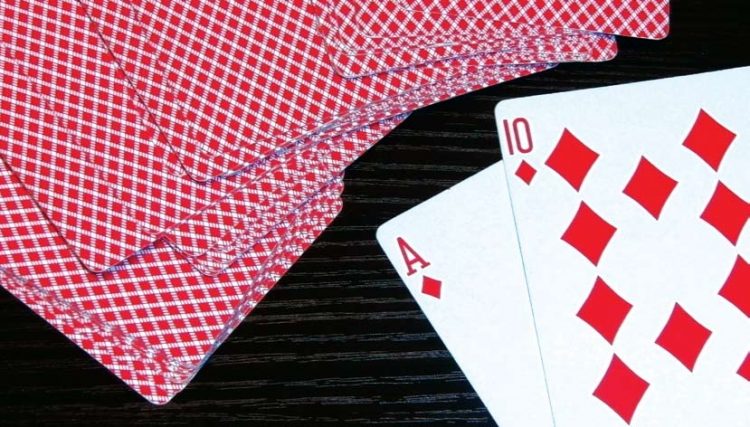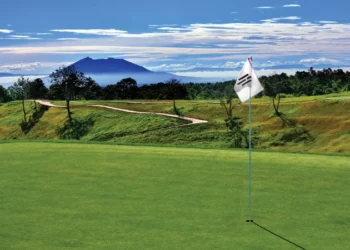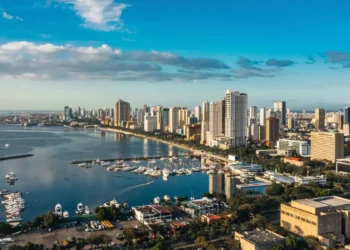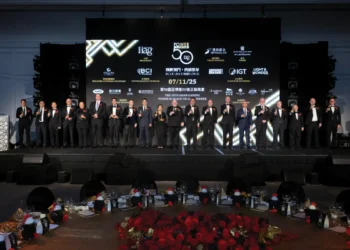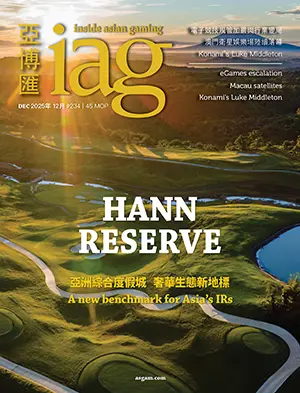In the first of a two-part essay, respected US-based gaming journalist James Rutherford discusses the key features of the red-hot Macau and Singapore casino markets
In the six years since Inside Asian Gaming was founded, the magazine has written at length and depth about the nuts and bolts of the Asian casino industry. Although some regard IAG as more ‘technical’ than other industry publications, we have a simple aim in mind—clear story-telling with an educational angle. Our hope is that regardless of a reader’s background knowledge about the regional industry, he or she can pick up a copy of IAG and understand the stories and where they fit into the multiple business models of the Asian casino sector. “Knowledge is power” wrote the 17th century philosopher Thomas Hobbes. The counterpoint to that is “ignorance is bliss”—a viewpoint presented by the poet Thomas Gray writing a century later. But unless you’re a person of poetic sensibilities or don’t have a business to run or a family to feed, then you’re likely to side with Hobbes.
Here in the first of a two-part series, the respected gaming journalist James Rutherford gives a personal perspective on how Macau and Singapore are viewed from the US—the country that started modern resort-based casino gaming.
I. The Name of the Game
The popularity of gambling in all cultures derives from its origins in religion. It was a means, among others, for prophesying the future. The money came into it because a person wishing to divine their standing with the unseen powers should expect to pony up for the information— oracles having to eat, too, after all. The money element lingered no doubt for the frisson of danger it lent to the enterprise. It imbued the act of prophesy with a palpable significance.
The roots of this blending of the mystical and material still run deep in Eastern cultures. Chance is something of a Western construct. The Chinese tend to view things through the prism of inexorable karmic laws. Gambling, refracted in this way as a tussle with luck, or destiny, as they see it, is a natural product of the cosmic ebb and flow. As portents go—of the many available for the seeking on life’s journey—it enjoys a considerable measure of respect. By that reading, the growth of Asian casino gaming is a function not only of regional economic growth, but a desire by many newly-affluent Asian consumers to test their luck for the future.
Baccarat is a particularly rarefied form of the quest; a game of very low house advantages and often very high betting limits in which everything comes down to luck—as pure a test as the casino floor provides. That’s about the best way to understand its popularity as the gambling game of choice among the ethnic Chinese across the region.
It became popular in Macau in the 1960s, but its place in the lore of the Middle Kingdom may harken back to much earlier times. The ‘natural’ hands, 8 and 9, represent auspicious quantities in Chinese numerology, as does 6, another important number in the game. In Europe, baccarat was originally played with Tarot cards, and one theory holds that along with its close cousin chemin de fer, it actually descended from pai gow, the popular Chinese gambling game played with tiles and similar rules.
II. China’s Individual Visit Scheme—The History
The Individual Visit Scheme (IVS) is part of a gradual opening up of mainland China that has been going on since the country’s economic reforms of the 1980s. Initially, that opening up was inward—allowing investment from Hong Kong and Taiwan and later from outside the zone often referred to locally as Greater China. Later, the opening up involved movement the other way, enabling Chinese citizens to travel abroad—firstly in escorted groups, but then also as individuals. That’s not an unusual concept for Westerners, steeped as they are in the cultural traditions of individualism. But it was initially a radical concept for Chinese after centuries of collective living and thinking. That opening included allowing China’s avid gamblers to visit Macau.
What specifically triggered the launch of the IVS in 2003 was the need to boost tourism to Macau and Hong Kong after the trauma of the Severe Acute Respiratory Syndrome (SARS) outbreak. (This shouldn’t be confused with ‘SAR,’ short for Special Administrative Region—the title appended to the semi-autonomous Macau and Hong Kong territories since their return to Chinese administration.)
The IVS—or something like it—would have eventually happened with or without SARS. But the policy—coming as it did the year after the first post-monopoly casino concessions were awarded—couldn’t have been more propitious. To give an idea of its impact, in 1999, the year Chinese sovereignty was restored in Macau, the Macau Statistics and Census Bureau counted 1.6 million mainland visitors. In 2010, those visits from mainlanders totalled more than 13 million (53% of all arrivals). A total of 5.4 million of those trips (41%) were made using individual visas. This year, mainland Chinese are tracking at about 57% of visitor arrivals. Through August, their numbers had topped 10.5 million and were surging 17% year-on-year. Travel on individual visas in August accounted for about 42% of those visits.
Internationally, the IVS generates 70% of China’s outbound tourism. Currently, about 270 million residents in 49 cities are eligible to apply, including all 21 major cities in Guangdong—the province bordering Macau and Hong Kong and the most populous in the country.
IVS travellers pay dividends outside the casinos too. Because the scheme restricts the frequency and duration of their visits, visitors from the mainland tend to stay longer and spend more—on average MOP2,039 per capita in Macau last year, versus MOP1,158 for other visitors—and they constitute more than half of all hotel guests.
III. Individual Visit Scheme—The Geography
What so impressed the European traders and colonisers of centuries past about Macau is still obvious from a glance at the map. The Macau peninsula occupies the southern flank of the delta where the Pearl River flows into the South China Sea. Within two hours’ travel of Macau are around 60 million mainland Chinese who possess both a deep cultural affinity for gambling and the means to indulge it. The delta region as a whole is one of China’s busiest manufacturing, transport and export centres. Guangdong reputedly has the most yuan billionaires in the People’s Republic. Last year, Guangzhou, the provincial capital—the centre of a metropolitan area of almost 13 million people— joined Beijing and Shanghai in surpassing 1 trillion yuan in gross domestic product.
About 40 miles from Macau across the busy sea lane to the northeast is one of the planet’s great concentrations of high net worth individuals—in Hong Kong. Macau and Hong Kong are not yet fully connected by high-speed public transport to Guangzhou and all points north, but the infrastructure is improving all the time. The final 15-mile section of a fast rail link that will transport visitors from Guangzhou to Macau in under one hour should be operational by late 2012. That’s upon completion of the terminal station at Gongbei on Macau’s border with Zhuhai, a city of 1.5 million and a popular holiday destination in its own right. Shenzhen, a port city of 3.5 million, the wealthiest metropolis in China on the basis of GDP per capita, lies just north of Hong Kong and is already connected by rail via Guangzhou to the major cities of the coastal provinces of Fujian and Zhejiang, and from there to Shanghai.
IV. Singapore’s Secrets
The Singapore government’s rationale for introducing two casino resorts to the city-state is well publicised and very clearly targeted. It wanted to increase annual tourism to 17 million arrivals by 2015, compared to the 10.1 million recorded in 2008. It also wanted to double annual receipts from tourism to S$30 billion by 2015, compared to the S$15.2 billion achieved in 2008.
The difficulty is that the government apparently doesn’t want its own people—or the outside world—to know how much of that increase in tourism receipts is being driven directly by gambling as compared to the MICE trade and shopping. The Singapore Tourism Board doesn’t break down the gambling component in its assessment of visitor spending—lumping it instead under the broad heading ‘Sightseeing and Entertainment’ in its listing of visitor spending. And it hasn’t yet published even those figures for 2010—when the casino resorts opened in February and April, respectively. It seems additionally that the Singapore government especially doesn’t want the world to know how much of the gambling component to the city’s economy comes from local players.
One of the Singapore casino operators has been relatively open on both these questions. Its Las Vegas Sands Corp (LVS)—developer and operator of the Marina Bay Sands (MBS) resort. Its earnings filings to the US Securities and Exchange Commission show that in the second quarter of 2011, 70% of MBS’s gross revenues came from gambling and 30% from non-gambling, including the hotel operation, food and beverage and retail. The split was US$594.6 million for the casino and US$180.3 million from other operations. That’s better than Macau’s 94% gaming to 6% non-gaming split (as estimated in a recent report in FinanceAsia), but far from Las Vegas’ 40% gaming to 60% non-gaming mix.
Genting Singapore, the Singapore-listed operator of the rival casino resort, Resorts World Sentosa (RWS), follows the opaque approach of the city’s government and doesn’t give the split on gaming to non-gaming revenue. Even LVS only takes transparency so far when it comes to talking about how much business is being generated by local players rather than foreign visitors.
In May, Michael Leven, the LVS President and Chief Operating Officer, gave Inside Asian Gaming some guidance without spelling out the actual numbers. He said the Singapore government had asked the company to ensure not more than 30% of all visitors to MBS are Singapore citizens or permanent residents.
“We are basically told that as long as only about 30% of the people coming in are Singaporean, then it shouldn’t be a problem,” said Mr Leven.
“If the amount of Singaporean attendance gets much higher than that, there may be some cause for concern. But to this day, only about 3% of the population of Singapore has ever played in a casino.”
The Singapore authorities might be better to focus on intensity of play rather than headline numbers through the door. The casino entry levy was supposed to deter locals from playing, but there’s some anecdotal evidence that—in the case of the S$100 entry fee for a single 24-hour period—it actually encourages locals to play more intensively. That’s because many locals seek to get ‘value’ from the levy by attending the casino twice in the allotted 24-hours.
V. The ‘Dead’ Chip Industry
In the 1980s, at around the mid-point of his casino monopoly, Stanley Ho developed Macau’s unique VIP market structure—involving operators of private VIP rooms and the rolling chip commission programme. It continues to generate the bulk of casino revenue in Macau and most of the other legal casino jurisdictions in Asia. In 2010, VIP baccarat was 72% of Macau’s US$23.5 billion gaming gross. That proportion looks set to rise in 2011. This trend has occurred despite the efforts of the Las Vegas-based operators—when they first came to Macau—to cut out the middleman.
The first VIP rooms, located within Dr Ho’s casinos, took on some of the administrative burden of the gaming operations in exchange for a share of revenue. Meanwhile, junkets received a commission on the purchase of ‘non-negotiable’ (NN) or ‘dead’ chips by the players they brought in. The commission serves not only as a reward to junkets for bringing their clients to a particular casino, but also for extending credit to those clients, since the bulk of VIP gamblers in Macau nowadays hail from mainland China and are unable to bring large sums of money out of the country to play with. In addition, gambling debts are not legally enforceable in China, so the junkets (or rather the sub agents that feed them players) are also charged with the sometimes onerous task of collection.
Winning bets are paid in normal cashable chips which players can exchange for more dead chips. The more cash or cash equivalents the promoters induce their clients to exchange, or ‘roll,’ in this manner, by providing credit, the more they earn, hence the term ‘rolling chip volume’ (or ‘rolling chip turnover’) for denoting the churn on income statements and revenue reports.
During 2009, the Macau government became concerned about what some analysts had referred to as “irrational” competition in the Macau VIP market, with new casinos (chiefly Crown Macau, now known as Altira) buying new business by offering an eye-watering 1.35% commission on rolling chip sales. Faced with lobbying also from the other casino operators alarmed that their margins on VIP baccarat were being dangerously eroded by the commission price war, in August 2009 the government drafted a regulation to cap VIP rolling chip commission at 1.25%. Profit share—another way of dividing the spoils of VIP play between casino and junket operator—is not capped. The Macau government looked at doing it, but decided it would be impractical.
The blended average house advantage on baccarat is around 1.3% (with house advantage on cash play determined by dividing house win by handle). The win rate using NN chips in Asian VIP rooms is calculated according to a slightly different metric: house win divided by NN chip sales (with NN chip sales used as a proxy for turnover). Since the Player and Banker bets on baccarat are close enough to even money wagers, each NN chip has an expected life of just under two bets.
Thus, the win rate on VIP baccarat is a little over twice the house advantage on baccarat. Although casino operators have varying win rate assumptions on VIP baccarat, a generally accepted figure is about 2.75%.
Even when the house doesn’t have to share with an outside promoter, the house hold volatility inherent in baccarat can make it a tough—and risky—business for the casino. Gary Loveman, the Chairman of Caesar’s Entertainment, was once quoted as saying he didn’t like high stakes baccarat in his business mix because one lucky whale could potentially wipe out in a single session a significant portion of a casino’s profit.
In Macau, the effects of the narrow margin are ameliorated by sheer volume of play. The Macau operators can still rake in enormous profits even after the tax man and the promoters and junket operators take their shares because the roll in dead chips is enormous. VIP turnover last year exceeded US$500 billion, translating into US$17 billion high roller revenue. That was three times larger than the entire gross gaming revenue on the Las Vegas Strip for 2010.
Next month, we’ll discuss ‘hungry tigers’, table ratings, silent partners, the possibility of fresh licences and another issue never far from Westerners’ minds when they think about Asian casinos—crime.






